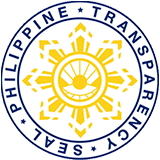 Florence T. Morales | Community Facilitator
Florence T. Morales | Community Facilitator
KABUGAO, Apayao – Can anyone predict change in a small, far-flung, community? Can a village that has lived in silence awaken itself and be empowered?
These questions are best answered in the villages of Lucab in Kabugao, Apayao.
Barangay Lucab is geographically located at the core of Kabugao town. It shares its borders with five other barangays – Madagat on the north, Dagara on the south, Madduang on the west, and Cabetayan and Poblacion on the east.
The barangay is some 13 kilometers away from the center of the municipality. In fact, one needs to take a motorboat that will pass through the Abulog-Apayao River, go on a 15-20-minute motorbike ride, and hike for 45 minutes to an hour to get to this community.
The remoteness of Lucab seems to permit the isolated culture of the communities in the area.
During the early stages of the Kapit-Bisig Laban saKahirapan-Comprehensive and Integrated Delivery of Social Services (Kalahi-CIDSS) Project, a DSWD-led community-driven project in this barangay, the timidity of the inhabitants was way noticeable. This had an impact on their involvement in the Project since they were not vocal about their support for it.
In a way, this behavior helped DSWD workers to blend with the locals with ease. During the conduct of the preparatory activities, workers saw anything that may disrupt the implementation of the Kalahi-CIDSS Projec because nobody seemed to have the courage to talk and participate.
With the passive attitude of the people, DSWD staff expected that their participation and support towards the Project would be poor.
To their surprise, however, the barangay was able to set a 100% household participation rate in their first barangay assembly. Discipline and participation became very evident, especially among barangay officials.
They also exhibited maturity in decision making by putting aside their personal interests. The people has manifested active participation from all sectors of the community.
However, their support towards the Project was tested when they were asked to amend the communal irrigation system to a farmland drainage canal due to inappropriateness of the first sub-project that they earlier have proposed.
Instead of giving up, the community volunteers gathered and talked about the dilemma. They took into consideration the consequences of the decisions they will make. They thought of the lasting benefits of the sub-project they will choose.
Eventually, the community was able to settle down on choosing a farm land drainage canal as their proposed sub-project. From choosing a communal irrigation system, they came to realize that the drainage canal will serve them better, because they were not able to use their farm lands as the water stagnates during the rainy season.
This was only the first of many barriers they needed to hurdle. The strong foundation of the barangay was perturbed when a local leader had to leave due to some personal concerns. This greatly reduced the participation of most members of the community.
Again, a major problem came when the administrator of the irrigated land retracted his agreement to take part in the Project. Worse, he barricaded his lot, which is the main passage of the drainage canal proposed by the community. This became the core battle of the whole community, especially for the community volunteers, since it might become the reason that their sub-project could not be implemented.
The community’s hard work
A lot of work had to be done for the community. Coaching and technical assistance were given to the volunteers since the team could not afford to let them lose the chance that they deserve.
After arduous discussions and hard work, the volunteers were able to solve the hitch that they had encountered. The support and encouragement from the newly appointed Punong Barangay invigorated commitment of the community.
Above else, this is credited to the persistence of the community towards their development.
Despite the delays in the sub-project implementation, the village of Lucab was able to finish the farm land drainage canal in just a month. Indeed, they have worked hard and exceeded the expected output in the construction of the sub-project. This gave them the number one spot in the accomplishment of sub-project all over Kabugao.
Despite the hardship the community has experienced in Lucab, DSWD workers have found inspiration in the community.
When asked how they were able to work out their hitch, the people answered, “Dayta ti nasursuro mi iti Kalahi-CIDSS. Insuro da kami nga solbaren dagiti problema mi. Insuro da kami nga mamati iti laing ken panagkaykaysa mi, nga kaya mi (These are the things we learned with Kalahi-CIDSS. We were taught to solve our issues and concerns in our level first. They taught us to believe in our abilities, intellect, and that we can make it.)”.
We may not claim empowerment happening right away, but for the people of Barangay Lucab, empowerment has already grown in their hearts despite the silence in their mouths. #




